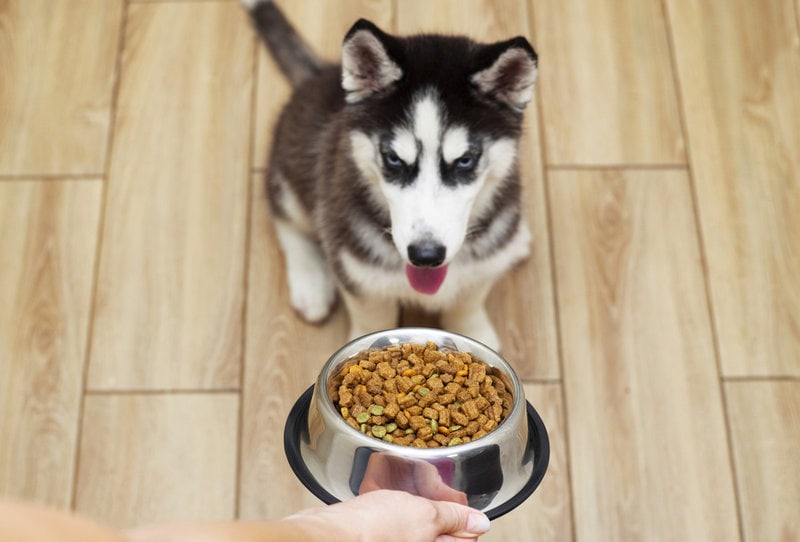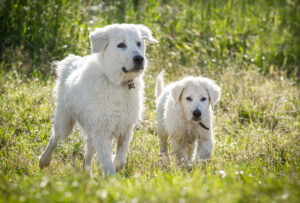Most people are familiar with Pavlov’s dogs. If you’ve already attended the Psychology 101 course, you’ve probably heard of Pavlov, his dog, and his experiments. In the fields of psychology and physiology, it’s a notable story.
Pavlov’s dogs are popular in psychology classes, but their physiology aspect must be more prominent. However, do you understand what it’s all about and how it relates to classical conditioning? If yes, then what’s the main point of the whole experiment?
Ivan Pavlov’s dog experiments are perhaps the most known example of classical conditioning. It is reported that learning in dogs and humans occurs due to an interaction with the environment. Furthermore, the environment influences behavior, but internal mental states like feelings, ideas, and emotions are incapable of explaining human behavior.
Pavlov trained his dogs by ringing a buzzer and then feeding them; finally, the buzzer made them salivate. Most people believe that’s where the narrative ends. What transpired after that is a mystery to most of us. If you want to discover more about it, continue reading this article.
Who Is Ivan Pavlov?

Ivan Petrovich Pavlov was a Russian scientist who is credited with coming up with the idea of a “conditioned response.” Pavlov strengthened his idea by showing that animals can be trained to respond to a variety of stimuli.
When Pavlov won the Nobel Prize in Physiology or Medicine in 1904 for his study on digestive secretions, he was substantially awarded for his efforts. He was the first Russian to receive a Nobel Prize.
Pavlov’s main areas of interest were natural sciences and physiology. He was a founding member of the Institute of Experimental Medicine’s Department of Physiology, and he supervised the program over the next 45 years.
Pavlov’s scientific contributions were only possible because he was ready to work with healthy, normal canines in a realistic context.
His success was primarily due to his ability to think creatively in order to design a method for producing quantifiable physiological effects that showed the brain’s response.
Was Ivan Pavlov A Psychologist?
Pavlov was a physiologist rather than a psychologist. He was born in Russia in the mid-nineteenth century and had a long and wonderful career in animal physiology.
He was known for a scientific breakthrough that made his name synonymous with psychology and, in particular, the study of behavior.
What Was Pavlov’s Dogs Experiment?
Pavlov’s dog experiments were significant in the creation of one of psychology’s most essential topics: classical conditioning. Classical conditioning is also known as associative learning or Pavlovian conditioning.
Pavlov demonstrated that if a bell was regularly presented at about the same time as food, canines could be trained to salivate in response to it.
The dogs were first provided with the food, which caused them to salivate. The unconditioned stimulus was the food, and salivation was an unconditioned or innate reaction.
Before providing the food, Pavlov rang the bell, which acted as a neutral stimulus. Even when no food was offered after just a few tries, the dogs still salivated when they heard the bell.
The conditioned stimulus was the bell, and the conditioned response was salivation. The dogs had learned to recognize the bell with food, and the ringing of the bell caused salivation.
How Was Pavlonian Conditioning Discovered?
Ivan Pavlov received the Nobel Prize in 1904 for his research into digestive processes. Pavlov noticed an odd phenomenon while researching canine digestion: whenever an assistant walked in the room, his dogs began to drool.
Pavlov, along with his assistants, would present a variety of appetizing and non-edible objects in his digestive research and evaluate the saliva output. He said that salivation is a reflexive process. It happens without conscious control and happens in reaction to a specific stimulus.
Pavlov rapidly discovered that this saliva reflex was not the result of a physiological process that happens automatically. He proposed that salivation was a learned reaction based on his findings.
Pavlov’s canine participants reacted to the presence of the assistants’ white lab coats, which they had learned to identify with food presentation.
Salivating in anticipation of food is a conditioned reflex, unlike salivating in response to food presentation, which is an unconditioned reflex.
When Did Pavlov’s Dog Experiments Take Place?
Ivan Pavlov’s experiment with dogs was a study conducted in the 1890s in which he surgically placed tiny tubes into the dogs’ cheeks to assess saliva buildup when they were being fed using a meat-based powder under different settings.
Why Did Pavlov Choose A Dog For His Experiment?
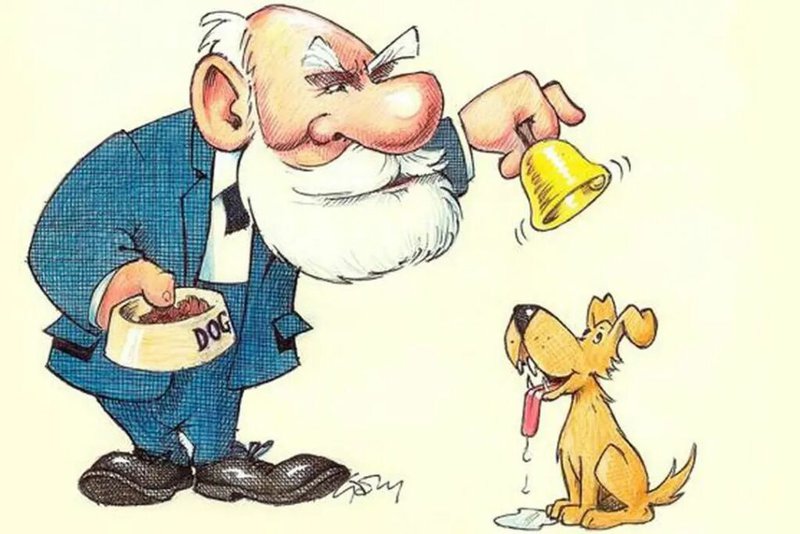
Dogs were the choice for Pavlov’s experiments since they are basic models, whereas people are much more complex and difficult models.
In addition, it was widely understood in the late 1800s that keeping a person in a cage just like an animal to investigate how they respond to a particular stimulus would be unethical at the very least and cruel.
Pavlov required animals with little history to make certain his test subjects weren’t responding to previously learned stimuli. In Pavlov’s experiment, he used young dogs. It’s extremely simple to use young dogs, but using little human children raises dozens of new ethical concerns.
In this section, you’ll learn more about the dogs that Pavlov used in his experiment. Keep on reading to discover about these canines that made a huge contribution to science.
What Kinds Of Dogs Did Pavlov Use?
Pavlov didn’t have a preference for the breeds of dogs he used. He didn’t opt for a certain breed, but rather, he used a diverse range of dogs, and most of them were mutts. In fact, one of these dogs is on display at Russia’s Pavlov Museum.
How Many Dogs Were Used For Pavlov’s Experiment?
There are no exact figures, but hundreds, if not thousands, of dogs were used as experimental animals during Pavlov’s career. Many of them died as a result of the experiment, as they did in many other physiological studies around the world.
What Was Pavlov’s Dog Called?
Tim Tully is a researcher at Cold Spring Harbor Laboratory who recounts why he decided to seek the names of Ivan Pavlov’s dogs in 1992 in an essay published in Current Biology in 2003.
The names and photographs of Pavlov’s dogs are presented in Russian script alongside the English, and some English translations are included as well. The following are some of the names of Pavlov’s dogs that have been discovered:
- Arap
- Arleekin (Clown)
- Avgust
- Baikal
- Barbus (Big Dog)
- Bierka
- Box
- Chingis Kahn
- Chyorny (Black)
- Diana
- Drujok (Buddy)
- Golovan
- Ikar
- Jack
- Nalyot
What Did The Bell Act As In Pavlov’s Experiment?
The bell was the most iconic item utilized in Pavlov’s experiment on dogs. The ringing of a bell was introduced by Pavlov as a neutral stimulus.
Prior to feeding his dogs, he or any of his assistants would ring a bell. The dogs would eventually identify the relatively harmless action of ringing the bell with the guarantee of food.
Why Did Pavlov’s Dog Salivate When The Bell Rang?
Any stimulus that is sufficiently matched with an eliciting stimulus can gain the attributes that cause the response to be elicited.
Considering that the white lab coat was used in conjunction with the eliciting stimuli or the meat powder in a reasonable number of instances, the lab coat gained the ability to trigger salivation.
Ivan Pavlov found that he could train a canine to salivate. Yes, when a bell rings, the dog salivates. Pavlov fed the dog a meat powder, which caused it to salivate. Afterward, he rang the bell, and the dog, surprisingly, did not salivate.
After doing so, Pavlov rang the bell and handed out meat powder together. The dog, as usual, salivated. He decided to perform this multiple times, and each time the dog salivated. He rang the bell once more but this time without no meat powder. The dog was found to be salivating.
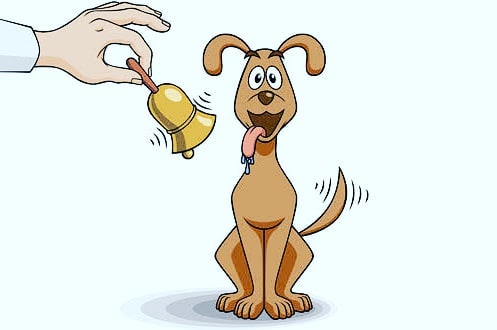
How Did Pavlov Get The Dog To Stop Salivating When He Rang The Bell?
When Pavlov stopped providing his dog the food after ringing the bell, the pooch stopped salivating at the sound, which is known as extinction. When the original conditioned stimulus is repeated, the conditioned response can re-emerge shortly, but it is generally weak and temporary.
How Did Pavlov Prove That Salivation Is A Learned Response?
Since the dog does not establish a response with the bell at first, it is basically a neutral stimulus. But since the dog has learned to connect the bell with food, the bell has become a conditioned stimulus by the end of the study.
Because it occurs naturally, salivation in response to food is indeed an unconditioned response. Lastly, salivation in response to hearing the bell is a learned response and, thus, a conditioned response.
What Did Pavlov Originally Want To Learn About Dogs?
Pavlov’s early research focus was on canine salivation. He was giving meat powder to dogs using a food dispenser to measure the amount of salivation made by their salivary glands.
What Did Pavlov Do To The Dog?
The anticipatory salivation of the dogs was named “psychic secretion” by Ivan Pavlov. He put these unofficial findings to the test by presenting a stimulus, like ringing the bell and then feeding the dog; after some repetitions, the dogs began to salivate in reaction to the stimulus.
What Was Wrong With Pavlov’s Experiment?
Pavlov stated in a lecture that he attempted to use the violent way of ringing a bell but found it insufficient. However, it was too inaccurate for a controlled experiment.
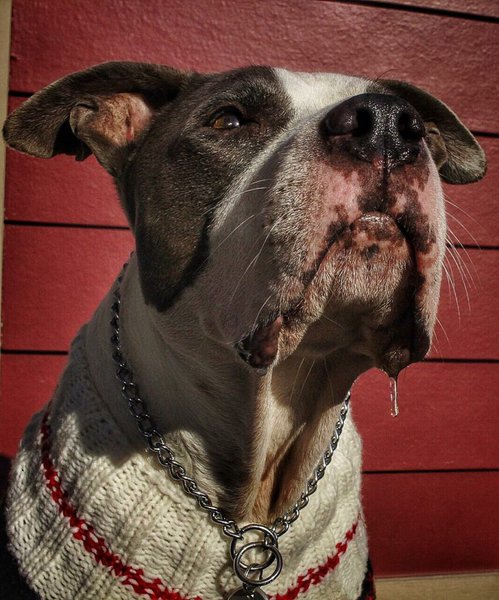
Is Pavlov’s Dog Experiment Ethical?
Pavlov did use children in his conditioning tests. Restraints and harsh medical methods subjected the children and animals to similar emotional and physical torment.
Numerous ethical rules were considered to be broken, according to today’s obligations and commitments of psychologists from the American Psychological Association’s Code of Ethics 2016.
Placing holes in the corners of the dogs’ mouths to gather the saliva needed to be measured as well as giving electronic shocks set on a metronome were all part of Pavlov’s dog experiment. His goal of changing human behavior changed just after the achievement of his dog experiment.
Did Pavlov Really Use A Bell?
Pavlov never used a bell since he couldn’t use one for his true scientific objectives. Due to a major mistranslation of the Russian word for “zvonok,” which translates to the buzzer, and because behaviorists defined Pavlov in their image for individuals in the United States along with much of the West, the English speakers believe he did.
Did Pavlov Electrocute Dogs?
Pavlov experimented with non-auditory stimuli such as electric shocks and light from a lamp. He also experimented with harmoniums, metronomes, and other stimuli that could be accurately monitored.
Did Pavlov’s Dogs Get Eaten?
During the siege of Leningrad, Pavlov’s dogs were indeed eaten. Dogs are only vehicles for demonstrating the desired behavior in the eyes of science, and they are beyond unimportant. Their lives turned out to be significantly less prestigious, and their deaths even more so.
The Germans attacked the city’s grain stockpiles, therefore preventing the citizens from adequately rationing their food. As the siege progressed, rationing became increasingly difficult; each civilian was allotted a daily ration of a small piece of bread comprised primarily of bomb-charred dust and grain.
By the middle of the first winter, all rats, cats, and mice had disappeared. Cannibalism became such a problem in Leningrad that the police department established a special anti-cannibalism unit.
Pavlov’s experiments with dogs had previously been conducted at the Leningrad Physiological Institute, but with the siege and ever-dwindling food supplies, zoo animals, pets, and even working animals were now being harvested for food.
Unfortunately, Pavlov’s dogs fell prey to the hungry citizens, as institute employees and even some of the researchers who’d already worked alongside Pavlov and the dogs ate the wretched animals out of hunger.

Can Humans Be Conditioned Like Pavlov’s Animals?
According to a new study, people may be taught to crave food in the same way that Pavlov’s dogs were trained. The findings show that once our cravings for specific meals have been fulfilled, our brains can put a stop to them.
How Is Pavlov’s Theory Used Today?
Pavlov’s behavioral theory of classical conditioning is significant to a kid’s behavior and development because a kid will behave in a good or bad manner based on whether they are rewarded or punished.
This has an impact on the child’s learning environment, as they may learn in different ways depending on the situation.
Teachers can also use classical conditioning in the classroom to help pupils overcome fear or anxiety by creating a good teaching environment.
The student learns new associations by pairing an anxiety-provoking scenario, such as presenting in front of a crowd with comfortable surroundings.
What Did Pavlov’s Experiments With Dogs Teach Us?
We perform many tasks on default throughout the day. We brush our teeth without thinking when we wake up and wash our hands after each toilet use. Routine behaviors, both positive and negative, are triggered by small cues in our surroundings.
Our minds, like Pavlov’s dogs, have learned to correlate specific stimuli with learned responses. This can happen once you hear the sound of your alarm clock, making you crave a cup of coffee.
Pavlov’s experiment shows that conditioning may also be used to influence behavior. You may train your brain to link regular patterns with new healthy and beneficial behaviors, such as establishing a relaxing nighttime habit to help you sleep better by drinking chamomile tea.
Why Were Pavlov’s Experiments So Important To Psychology?
Pavlov’s experiments are important to psychology because they taught every individual that major psychological events may be investigated objectively and that classical conditioning is a universal form of learning.
Classic conditioning may also have a plausible effect on the immune system, giving rise to a mechanism of the placebo effects.


